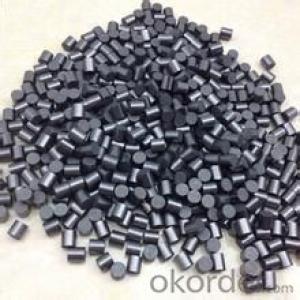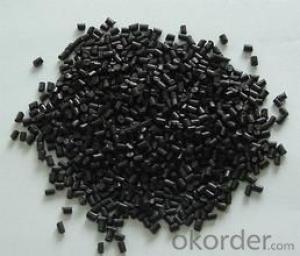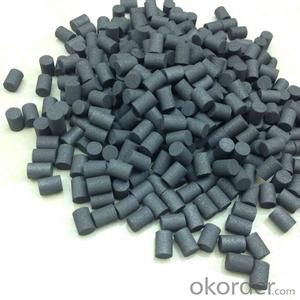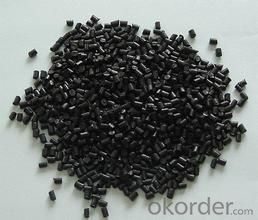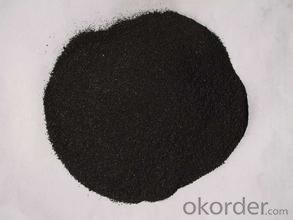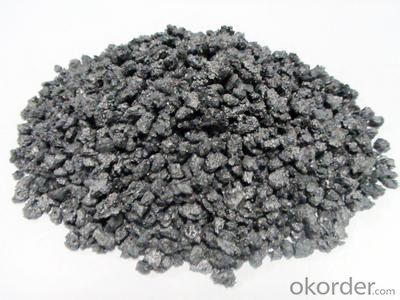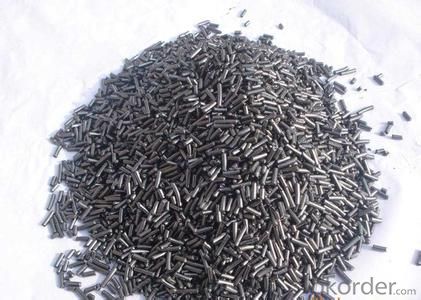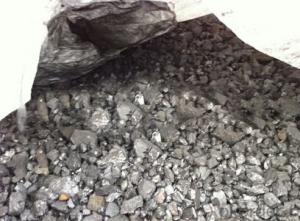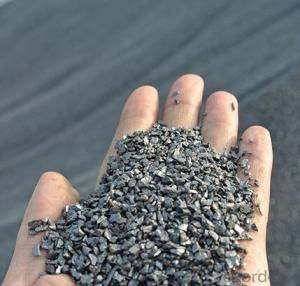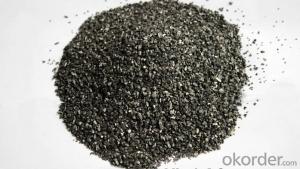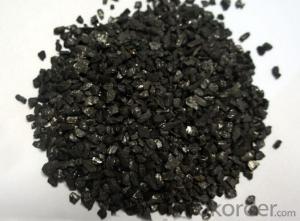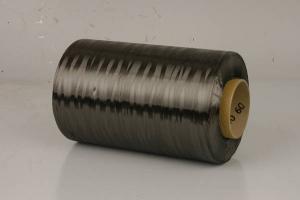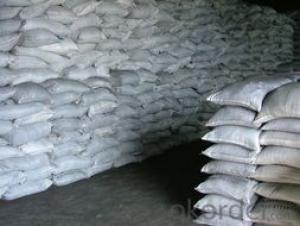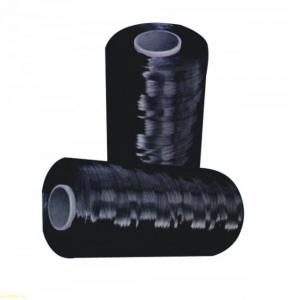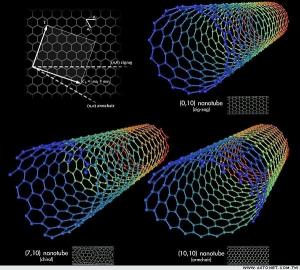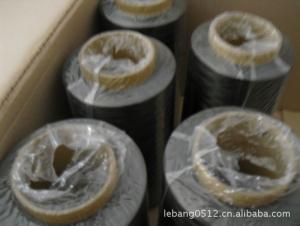Recarburizer 90%-99% for Iron casting Carbon addtive Carbide Recarburizer Carburant
- Loading Port:
- Qingdao
- Payment Terms:
- TT OR LC
- Min Order Qty:
- 1000 kg
- Supply Capability:
- 30000000 kg/month
OKorder Service Pledge
OKorder Financial Service
You Might Also Like
Specification:
- Professional Manufacturer
- Low Sulphur Content
- High Absorption Rate
Professional Manufacturer
As an ideal carbon additive and intermediate reactor, our recarburizer has been widely used in different industries like metallurgy, chemistry, machinery, electricity, etc. We can make different sizes and grades of recarburizer to meet your special needs.
As one of the leading companies in this field, we have a number of independent intellectual property rights and strong R & D capabilities. Our business ranging from the production of graphite material to precision machining of graphite parts and graphite molds.
Our recarburizer has the features of high carbon, low sulphur, nitrogen and harmful impurities. So it has been widely used for steel-smelting, casting, brake pedal and friction material. | |||||
Product Specification | |||||
Product No. | Fixed Carbon (Min) | Sulphur | Ash | V.M | Moisture |
Max | Max | Max | Max | ||
DT-CA-01 | 97.00% | 0.50% | 1.50% | 1.50% | 0.50% |
DT-CA-02 | 98.50% | 0.50% | 0.80% | 0.80% | 0.50% |
DT-CA-03 | 98.50% | 0.50% | 0.80% | 0.80% | 0.50% |
DT-CA-04 | 98.50% | 0.50% | 0.50% | 0.50% | 0.50% |
DT-CA-05 | 98.50% | 0.35% | 0.80% | 0.80% | 0.50% |
DT-CA-06 | 98.50% | 0.35% | 0.50% | 0.50% | 0.50% |
DT-CA-07 | 99.00% | 0.35% | 0.50% | 0.50% | 0.50% |
DT-CA-08 | 97% | 0.05% | 1.50% | 1.50% | 0.50% |
DT-CA-09 | 98.50% | 0.05% | 0.80% | 0.70% | 0.50% |
DT-CA-10 | 95% | 0.30% | 3.50% | 1.50% | 0.50% |
DT-CA-11 | 99% | 0.03% | 0.50% | 0.50% | 0.50% |
Remark:The above mentioned grain sizes are recommended standard, if your have special requirements, please feel free to contact us. | |||||
Consistent Quality Control
The whole management process is strictly complied with the ISO9001-2000 quality management system. our recarburizer has earned its reputation for exceptional carbon absorption performance and is welcomed by global customers from Japan, USA, Korea, Europe etc.
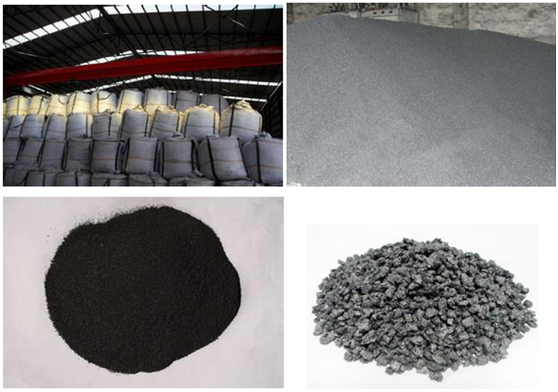
- Q: What are the effects of carbon emissions on the stability of ice shelves?
- Carbon emissions contribute to global warming, which in turn leads to the melting of ice shelves. As carbon dioxide is released into the atmosphere, it acts as a greenhouse gas, trapping heat and causing a rise in temperature. This increase in temperature accelerates the melting of ice shelves, ultimately destabilizing them. The loss of ice shelves disrupts the delicate balance of the polar regions, leading to rising sea levels and increased risk of coastal flooding. Additionally, the melting of ice shelves can also contribute to the release of large quantities of freshwater into the ocean, potentially affecting ocean currents and disrupting marine ecosystems. Overall, carbon emissions have a significant negative impact on the stability of ice shelves and the overall health of our planet.
- Q: Appearance, hardness, electrical conductivity, use of carbon 60
- For gas storageThe unique molecular structure of C60, C60 can be used as more effective and new hydrogen absorbing material than metal and alloy. There are 30 carbon carbon double bonds, each molecule of C60 so that the C60 molecules in the double bond open can absorb hydrogen. Stable C60 hydride has known C60 C60H24, C60H36 and C60H48. in the control of temperature and pressure conditions, can be simply made by C60 C60 and hydrogen hydrides, it at room temperature is very stable, and in the 80 to 215 DEG C, C60 hydride will release hydrogen, leaving the pure C60, it can be 100% recovery, and was used to prepare C60 hydride. Compared with the hydrogen storage materials of metal or its alloys, C60 hydrogen storage has the advantages of low price, and lighter than C60, metals and alloys, therefore, the same quality of material, the hydrogen storage of C60 metal or its alloy than more.C60 not only can store hydrogen, can also be used to store oxygen. Compared with high-pressure cylinders of oxygen storage, high pressure cylinder pressure is 3.9 * 106Pa, belongs to the high pressure oxygen storage method, and storage of C60 oxygen pressure is only 2.3 * 105 Pa, which belongs to low pressure oxygen storage method. Using C60 under low pressure, large storage has many uses of oxygen in the medical departments, military departments and the business sector will be.
- Q: How does carbon affect the stability of ecosystems?
- Carbon plays a crucial role in the stability of ecosystems. It is a fundamental element that is essential for all living organisms. Carbon is present in the atmosphere, in the form of carbon dioxide (CO2), and is absorbed by plants during photosynthesis. This process allows plants to convert sunlight, water, and carbon dioxide into glucose, which is then used as energy for growth and development. The stability of ecosystems heavily relies on the balance of carbon in the environment. Carbon acts as a building block for organic matter and is stored in various forms such as plants, animals, soil, and the atmosphere. This storage of carbon helps to regulate the carbon cycle, which is crucial for maintaining a stable climate. One of the main ways carbon affects the stability of ecosystems is through its role in climate regulation. Carbon dioxide is a greenhouse gas, meaning it traps heat in the atmosphere and contributes to global warming. Excessive carbon emissions from human activities, such as burning fossil fuels, deforestation, and land-use changes, have led to an increase in carbon concentration in the atmosphere. This results in the enhanced greenhouse effect, leading to rising temperatures and climate change. Climate change has far-reaching consequences for ecosystems. It can disrupt the delicate balance of ecosystems by causing shifts in temperature and precipitation patterns, altering habitats, and affecting the timing of seasonal events. These changes can lead to the loss of biodiversity, as certain species may struggle to adapt to the new conditions. Additionally, climate change can also impact the availability of resources, such as water and food, which are essential for the functioning and stability of ecosystems. Furthermore, the excessive release of carbon into the atmosphere can also have direct negative effects on ecosystems. Acid rain, caused by high levels of carbon emissions, can lead to the acidification of water bodies, making them unsuitable for aquatic life. Increased carbon dioxide levels in the oceans can also lead to ocean acidification, which harms marine organisms like corals and shellfish. On the other hand, carbon is also essential for the health and productivity of ecosystems. Carbon-rich organic matter in the soil helps to retain nutrients, improve soil structure, and enhance water-holding capacity. This enables plants to grow better and supports the overall functioning of ecosystems. In conclusion, carbon has a profound impact on the stability of ecosystems. While it is necessary for the growth and development of living organisms, excessive carbon emissions and climate change pose significant threats to the balance and functioning of ecosystems. It is crucial to reduce carbon emissions, promote sustainable practices, and protect carbon sinks like forests and wetlands to ensure the long-term stability of ecosystems.
- Q: What are the advantages of carbon-based batteries?
- Carbon-based batteries, such as alkaline batteries, have become a popular choice in various applications due to their numerous advantages. Firstly, their longer shelf life sets them apart from other battery types. They have the ability to retain their charge for extended periods, making them particularly suitable for devices that are infrequently used or for emergency situations. In addition, carbon-based batteries offer a higher energy density, enabling them to store more energy in a compact package. This makes them lightweight and convenient for portable electronic devices like smartphones, laptops, and cameras. Moreover, these batteries have a lower self-discharge rate, meaning they lose less charge over time when not in use. As a result, they can maintain their power for longer periods without the need for frequent recharging or replacement. Furthermore, carbon-based batteries possess a higher discharge rate, allowing them to deliver power quickly when required. This is especially advantageous for devices that demand a sudden burst of energy or for high-drain applications like digital cameras or power tools. Another notable advantage of carbon-based batteries is their cost-effectiveness. They are readily available, inexpensive to produce, and can be easily recycled, thereby reducing their environmental impact. In conclusion, carbon-based batteries offer a range of benefits, including a longer shelf life, higher energy density, lower self-discharge rate, higher discharge rate, cost-effectiveness, and environmental friendliness. These features make them a reliable and efficient choice for a wide array of electronic devices and applications.
- Q: What are the consequences of increased carbon emissions on cultural heritage sites?
- Increased carbon emissions can have significant consequences on cultural heritage sites. One of the most immediate and visible impacts is the deterioration of physical structures and artifacts. Carbon emissions contribute to air pollution, which can result in the formation of acid rain. Acid rain contains high levels of sulfuric and nitric acids that can corrode and erode materials such as stone, metal, and paint. This can lead to the degradation and discoloration of historic buildings, monuments, and sculptures. Furthermore, carbon emissions contribute to climate change, resulting in more frequent and severe weather events such as hurricanes, floods, and wildfires. These extreme weather events pose a direct threat to cultural heritage sites, causing physical damage and destruction. For example, rising sea levels due to climate change can lead to the erosion of coastal archaeological sites, causing the loss of valuable historical artifacts and structures. In addition to the physical impacts, increased carbon emissions also pose a threat to the intangible aspects of cultural heritage. Climate change disrupts ecosystems and biodiversity, affecting the natural surroundings of cultural sites. This can lead to the loss of traditional knowledge, practices, and cultural landscapes that are closely linked to the heritage sites. Indigenous communities, for instance, may lose their ancestral lands and sacred sites due to changing environmental conditions. Moreover, cultural heritage sites often rely on tourism as a source of income and conservation funding. However, increased carbon emissions contribute to global warming, which in turn can lead to changes in travel patterns and preferences. This can result in a decline in tourist visits to cultural heritage sites, impacting local economies and hindering conservation efforts. Overall, the consequences of increased carbon emissions on cultural heritage sites are multi-faceted and wide-ranging. It is crucial to address and mitigate these emissions through sustainable practices and policies to protect and preserve our shared cultural heritage for future generations.
- Q: What is the atomic weight of carbon?
- The atomic weight of carbon is approximately 12 atomic mass units.
- Q: I saw a cell phone in the magazine, the global release of 900, no camera, what function is F1 carbon fiber material, actually sold 40000 yuan a piece!.. Everyone said that the circulation is so small, worth so much money? Or carbon fiber material worth so much money?
- Carbon fiber material is very expensive, we are specializing in the production of carbon fiber bicycle accessories company, we know more about this industry.. Such an analogy, an aluminum alloy wheel, that is, the cost of more than 100 yuan, to replace the same carbon fiber material costs more than 1000 of the cost.. Carbon fiber belongs to high-end materials, and foreign countries is to control production, because many weapons and aircraft also use this material, the United States will build weapons in other countries, so are the strict control of each production state of carbon fiber materials..
- Q: Can carbon in barbecue cause cancer? Can carbonated food cause cancer?
- It will be。WHO published 3 years of research results, said barbecue foods produce carcinogenic substances are toxic, "eat barbecue, equivalent to smoking."". A US research center report even said eating a roast chicken leg is equivalent to the toxicity of 60 cigarettes; women who eat barbecue are 2 times more likely to develop breast cancer than other women.
- Q: What are the uses of carbon black?
- Carbon black has a wide range of uses across various industries due to its unique properties. One of the primary uses of carbon black is as a reinforcing filler in rubber materials. It improves the strength, durability, and resistance to wear and tear of rubber products, making them suitable for applications such as tires, conveyor belts, gaskets, hoses, and shoe soles. Carbon black is also used as a pigment in inks, coatings, and dyes. Its high tinting strength and ability to absorb ultraviolet light make it an excellent choice for coloring plastics, paints, and printing inks. Additionally, carbon black is used in toners for photocopiers and laser printers, providing the dark color required for high-quality printing. Furthermore, carbon black finds applications in the manufacturing of electrodes for batteries and fuel cells. Its electrical conductivity and high surface area make it an ideal material for enhancing the performance and efficiency of energy storage devices. Carbon black is also used in the production of carbon brushes, which are crucial components in electric motors and generators. In the construction industry, carbon black is utilized as a filler in concrete and asphalt to enhance their strength and durability. It improves the resistance to weathering, reduces cracking, and increases the lifespan of these materials. Additionally, carbon black is employed in the production of conductive polymers used for static dissipation and electromagnetic shielding in various construction materials. In summary, the uses of carbon black are diverse and span across multiple industries. From reinforcing rubber products to coloring inks and coatings, enhancing energy storage devices, and improving the strength of construction materials, carbon black plays a vital role in enhancing the performance and durability of various products.
- Q: What is the significance of the determination of total organic carbon in purified water?
- Purified water represents the total amount of organic matter in water by carbon content. It is an important indicator of water quality. The detection of total organic carbon in water is an important item for the detection of pharmaceutical water. Inspection item 2005 edition test item [1] character: This product is colorless and tasteless clear liquid. Check: pH, take this product 10ml, plus methyl red indicator liquid 2 drops, may not show red; another take 10ml, add bromine, thymol blue, indicating liquid 5 drops, may not show blue. Chloride, sulfate and calcium salt were taken in three test tubes, each with 50ml.
Send your message to us
Recarburizer 90%-99% for Iron casting Carbon addtive Carbide Recarburizer Carburant
- Loading Port:
- Qingdao
- Payment Terms:
- TT OR LC
- Min Order Qty:
- 1000 kg
- Supply Capability:
- 30000000 kg/month
OKorder Service Pledge
OKorder Financial Service
Similar products
Hot products
Hot Searches
